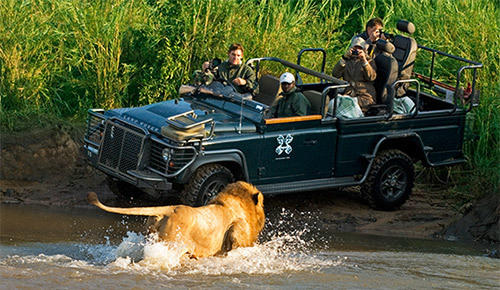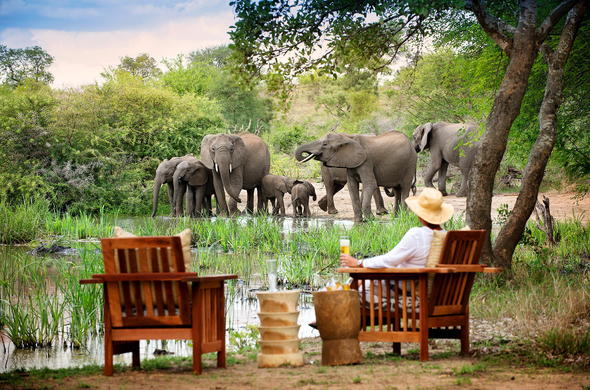Discover Iconic Wildlife and Picturesque Appeal with Kruger Park Safaris
Discover Iconic Wildlife and Picturesque Appeal with Kruger Park Safaris
Blog Article
Checking Out the Majestic Wildlife and Scenic Landscapes of Kruger Park Safaris: An Unforgettable Journey Waits For
Kruger Park, a foundation of South Africa's all-natural heritage, provides an elaborate tapestry of wildlife and breathtaking landscapes, inviting expedition and involvement with its varied ecosystems. As visitors endeavor right into this extensive sanctuary, they run into not just the iconic Big Five but also a wealth of other varieties that enrich the park's biodiversity. The juxtaposition of huge savannas and lush woodlands produces a dynamic backdrop for the safari experience. Comprehending the ideal time to check out and the subtleties of safari etiquette can significantly enhance one's trip. What insights await those who look for to browse this magnificent wilderness?
Review of Kruger Park
Among South Africa's biggest and most popular game gets, Kruger National Park spans around 19,485 square kilometers in the northeastern area of the nation. Developed in 1898, it is a keystone of preservation efforts, showcasing varied environments that consist of savannas, forests, and riverine forests. The park is home to an impressive array of wild animals, with over 500 bird varieties and various animals, reptiles, and plants, making it a biodiversity hotspot.
Kruger National Park is split right into different areas, each offering one-of-a-kind landscapes and environments, therefore improving wild animals watching chances. Site visitors can check out the park through self-drive routes or led safaris, enabling an immersive experience in nature. The park's facilities includes properly maintained roads, remainder camps, and picnic areas, making sure access for all sorts of vacationers.
Additionally, Kruger National forest plays a pivotal function in education and research study, adding to global conservation efforts. The park's dedication to lasting tourism promotes liable wildlife viewing, fostering a much deeper recognition for South Africa's natural heritage. With its breathtaking landscapes and rich biodiversity, Kruger National Park continues to be a top destination for journey seekers and nature enthusiasts alike.
The Huge Five Experience
Kruger National forest is renowned for supplying site visitors the opportunity to come across the famous Big Five, which consists of the lion, leopard, elephant, buffalo, and rhinoceros. This special chance to observe these marvelous animals in their all-natural environment attracts wild animals lovers and adventure applicants from around the globe.
The adventure of spotting the Huge Five is not simply about the animals themselves yet additionally the context of their setting. Each safari presents a new adventure, as guides share insights into the habits, habitats, and preservation efforts bordering these species. The elusive leopard, frequently seen resting in the trees, showcases the appeal of dexterity and stealth, while the imposing elephant herd highlights the relevance of social frameworks within wildlife neighborhoods.

Furthermore, encountering the awesome lion prides offers a glance right into the detailed characteristics of predator-prey partnerships. The Cape buffalo, recognized for their uncertain nature, includes a component of excitement to any kind of safari. Last but not least, the critically endangered rhinoceros acts as a poignant reminder of recurring preservation efforts. This immersive experience fosters a much deeper recognition for wildlife and highlights the importance of maintaining these unbelievable creatures for future generations.
Scenic Landscapes and Ecosystems
Frequently celebrated for its spectacular charm, the landscapes of Kruger National forest offer a varied tapestry of ecosystems that improve the safari experience. Extending nearly 2 million hectares, the park is home to a wide range of environments, consisting of savannahs, wetlands, rivers, and woodlands. Each environment is distinctively intertwined, developing a dynamic setting that sustains a variety of vegetation and fauna.
The savannahs, defined by substantial grasslands populated with acacia and baobab trees, offer perfect grazing grounds for herbivores like wildebeests and zebras. In contrast, the dense woodlands and thickets use haven for predators and smaller types, promoting an abundant biodiversity. The park's waterholes and rivers are lifelines for wildlife, attracting a wide variety of pets, particularly throughout the completely dry season.
This elaborate interaction of ecosystems not only supports the park's iconic wild animals but likewise provides visitors with magnificent views, from rolling plains to significant rough outcrops. Whether traversing open savannahs or checking out thick bushveld, the scenic landscapes of Kruger National Park assure to leave an indelible mark on every safari lover's heart.
Finest Times to Visit
Recognizing the most effective times to visit Kruger National Park can considerably boost the safari experience. Kruger park safaris. The park experiences two key seasons: the dry wintertime months from May to September and the wet summer season from October to April. Each period provides unique benefits for wildlife watching and landscape appreciation
During the completely dry season, pets gather around water resources, making wild animals spotting a lot more predictable. The plant life weakens, offering more clear presence for sightings of the Big 5 and various other types. This duration is especially prominent among tourists due to the beneficial conditions for game drives and assisted strolls.
Conversely, the damp period, identified by lush landscapes and vivid flora, is optimal for birdwatching lovers. Kruger park safaris. Migratory birds are learn the facts here now bountiful, and the park becomes a haven for numerous avian varieties. Furthermore, this season marks the birth of several young pets, providing a possibility to witness the fascinating characteristics of wildlife communications
Eventually, the ideal time to visit depends upon individual preferences, whether one seeks the ease of wildlife sightings or the charm of a flowering community. No matter the period, Kruger National forest assures a remarkable experience for all who venture into its wild embrace.
Safari Tips and Guidelines

Think about the moment of year when intending your safari. The dry season, from May to September, usually uses far better wild animals checking out chances. Wear neutral shades to mix right into the environment, and stay clear of brilliant or showy clothing that might surprise animals.
Load basics such as field glasses, a video camera, sunscreen, and bug spray. Staying hydrated is essential-- bring adequate water for your group. Additionally, bear in mind the park's wildlife; observe from a range and never ever attempt to feed or prompt pets, as this can alter their all-natural actions.
Involve with seasoned overviews, who offer very useful insights and enhance your understanding of the community. Approach your safari with perseverance and an open heart, allowing for spontaneous moments that will certainly develop remarkable memories in this magnificent landscape.
Final Thought
In verdict, Kruger Park uses an unmatched chance to involve YOURURL.com with diverse wildlife and breathtaking landscapes. The park's dedication to preservation and education and learning improves the safari experience, allowing visitors to appreciate the complex balance of ecological communities. Seeing the Large Five and exploring different terrains fosters a deeper understanding of South Africa's all-natural heritage. With careful preparation and adherence to standards, an experience in Kruger Park guarantees to be both enhancing and memorable for all that start this trip.
Kruger Park, a foundation of South Africa's natural heritage, offers an intricate tapestry of wildlife and spectacular landscapes, inviting exploration and involvement with its diverse ecological communities.Kruger National Park is divided into different regions, each offering distinct landscapes and environments, thus improving wild animals seeing opportunities. The park's waterholes and rivers are lifelines for wild animals, bring in a huge selection more helpful hints of animals, especially during the completely dry season.
Additionally, be conscious of the park's wild animals; observe from a range and never ever attempt to feed or provoke animals, as this can alter their all-natural behavior.

Report this page